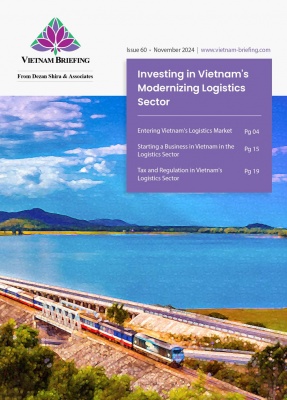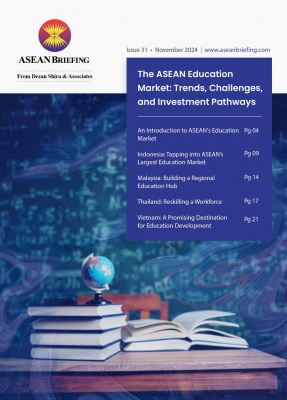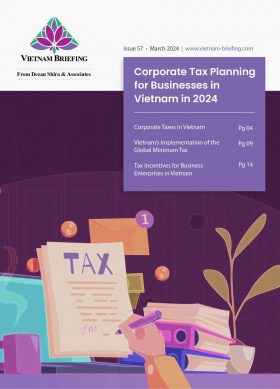Vietnam Labor Market Report for H1 2024
The Vietnam labor market showed positive trends in H1 2024, with increased employment opportunities and salary growth. Additionally, the proportion of Vietnamese workers holding degrees or certificates rose to 28.1 percent in the second quarter of 2024.
Despite slower economic growth, Vietnam’s labor market demonstrated resilience in the second quarter of 2024, with steady job creation and a stable unemployment rate. However, the labor market is expected to encounter additional challenges in the latter half of the year.
On one hand, there is reason for optimism. The General Statistics Office (GSO) of Vietnam reports that the number of employed workers and the overall labor force increased in Q2 2024 compared to both the previous quarter and Q2 2023.
On the other hand, several indicators suggest potential stagnation in the health of Vietnam’s labor force. The unemployment rate among the working-age population rose in Q2 2024 compared to Q1 2024. Additionally, the Q2 2024 underemployment rate among the working-age population increased from the previous quarter and remained unchanged from a year ago.
Strengths and weaknesses exhibited in Vietnam’s labor market in H1 2024
Positive trends
Vietnam’s labor market recorded a number of positive developments in the first half of 2024:
- The labor force aged 15 and above reached nearly 52.5 million people in H1 2024, an increase of 196,600 over the same period last year.
- The labor force participation rate in Q2 2024 was 68.6 percent, up 0.1 percentage points from the previous quarter. The number of employed workers reached 51.4 million after the first six months of 2024, increasing by about 0.38 percent (equivalent to 195,800 people) year-over-year. This indicates that Vietnam still maintains its golden population structure with an abundant working-age population and stable annual growth.
- The proportion of Vietnamese workers with degrees or certificates reached 1 percent in the second quarter of 2024. This rate increased by 0.3 percentage points compared to the previous quarter and by 1.3 percentage points compared to the same period last year, reflecting government efforts to enhance education quality.
- The unemployment rate among people of working age in H1 2024 was 2.27 percent, unchanged from the same period last year. The unemployment rate in urban and rural areas was 2.68 and 2 percent, respectively.
- The underemployment rate in the working-age population was 2.05 percent.
- The average monthly income of workers in H1 2024 was VND7.5 million (US$295.6), a rise of 7.4 percent year over year. Generally, the average monthly income of workers increased in most industries during both Q2 and H1 2024.
Average monthly income of Vietnam workers in several sectors, Q2 and H1 2024
|
|
Q2 2024 |
H1 2024 |
||
|
Industry |
Average monthly income (US$) |
Y-O-Y growth (%) |
Average monthly income (US$) |
Y-O-Y growth (%) |
|
Water supply, waste management, and treatment |
358.6 |
17.4 |
354.7 |
12.3 |
|
Production and distribution of electricity, gas, hot water, and steam |
441.4 |
15.2 |
441.4 |
13.9 |
|
Mining |
445.3 |
12.5 |
433.5 |
8.5 |
|
Finance, banking, and insurance |
488.7 |
10.6 |
500.5 |
11.7 |
|
Real estate business |
441.4 |
6.9 |
461.1 |
11.1 |
Source: General Statistics Office of Vietnam
Concerning trends
Besides the positive signs, Vietnam’s labor market performance in the first six months of 2024 also revealed some limitations:
- Over 70 percent of the labor force consists of untrained workers, highlighting a significant gap between the quality of Vietnam’s labor and the current demand for a modern, adaptable, sustainable, and integrated workforce.
- Informal workers in precarious and unstable jobs represent more than three-fifths of the total employed population.
- The increase in unemployment is largely due to approximately 20,000 businesses exiting the labor market in H1 2024. During the first six months of 2024, the unemployment rate among the working-age group was 2.27 percent, unchanged from the same period last year, with the general unemployment rate remaining around 2.2 percent.
- In Q2 2024, the unemployment rate for the 15-24 age group remains high at 8.01 percent, up by 0.60 percentage points year-over-year. Pham Hoai Nam, head of the Population and Labour Statistics Department at the GSO, noted that this increase is not overly concerning due to the influx of new entrants into the labor force.
Growth in labor demand in key Vietnam regions
Examining major economic areas in Vietnam reveals a more positive outlook. Labor demand is rapidly increasing in Southern regions, while Hanoi’s labor market is showing signs of recovery.
Binh Duong
According to the Binh Duong Provincial Labor Confederation, in the first half of 2024, the province saw 3,210 businesses seeking to fill 40,854 positions. Provincial authorities have assisted over 54,000 individuals in finding jobs and created nearly 17,500 additional positions, achieving 47.4 percent of the annual target.
The rebound in industrial production in Binh Duong has led to increased orders and production expansion. Pham Van Tuyen, Deputy Director of the Department of Labor, Invalids, and Social Affairs of Binh Duong, emphasized the significant need for additional workers. The province anticipates a demand for 60,000 to 80,000 workers in key sectors, including garment manufacturing, backpack and handbag production, sofa upholstery, electronics, woodworking, footwear, plastics, printing, and hardware. These are labor intensive industries that create numerous job opportunities for unskilled workers.
Ho Chi Minh City (HCMC)
According to the Center for Human Resource Demand Forecasting and Labor Market Information of HCMC (Falmi), job demand in the city has risen in several industries requiring high qualifications and work experience.
Sectors with high demand for labor in HCMC
|
Industry |
Job vacancies |
Proportion in HCMC’s total labor demand (%) |
|
Commercial businesses |
45,963 |
28.98 |
|
Personal and security services |
20,729 |
13.07 |
|
Asset and real estate management businesses |
11,070 |
6.98 |
|
Consulting, scientific research, and development services |
8,136 |
5.13 |
|
Mechanics and automation |
6,629 |
4.18 |
|
Administration, office, translation, and interpretation |
6,281 |
3.96 |
|
Finance, credit, banking, and insurance |
6,265 |
3.95 |
Source: Falmi
Regarding salary expectations, Falmi reported the following average monthly pay across different occupations:
- Over VND20 million (about US$790): Electronic engineering, information technology engineers, mechanics, marketing directors, human resources director, and medical specialist.
- VND15-20 million (about US$590-790): Programmers, multimedia specialists, event organizers, and warehouse managers.
- VND10-15 million (about US$390-590): Real estate business, marketing, accounting, and finance and
- VND5-10 million (about US$200-390):Sales staff, security, data entry, mechanics, and industrial machinery operators.
- Under VND5 million (about US$200): Delivery, warehouse, sales, housekeeping, service, cashier, and reception staff.
The survey also highlighted recruitment challenges, with 154 out of 654 businesses (nearly 24 percent) reporting difficulties. These firms are primarily in wholesale and retail, manufacturing and processing, and administrative and support services.
Hanoi City
In Hanoi, Vietnam’s capital, the number of workers finding jobs continues to rise, while the number receiving unemployment insurance is gradually decreasing.
In H1 2024, Hanoi created jobs for 124,920 workers, reaching 75.7 percent of its goal to provide employment for 165,000 people. This represents a 10.1 percent increase compared to the same period in 2023.
Approximately 37,300 workers secured employment with support from the city budget, allocated through the Bank of Social Policies, totaling VND 2,130 billion (US$84 million). Additionally, over 2,200 workers were placed in overseas jobs, and more than 76,600 people were recruited by businesses.
Outlook
The tech sector is driving employment growth in Vietnam, with high demand for Data Engineers, AI Engineers, Developers, and Cybersecurity experts. Asian companies prefer office work, while Western firms offer hybrid and remote options. Manufacturing is seeing a 10 percent job order increase, focusing on quality and environmental roles. Healthcare hiring is rising with digital solutions, while traditional pharmaceutical roles remain steady. Significant investments are boosting semiconductor job opportunities, especially in chip design. Media and marketing roles remain stable, increasingly influenced by AI. Finance and banking sectors are showing hesitancy in hiring, with Tier 2 banks expanding digital teams, but the insurance sector facing cuts to personnel. – Adecco H1 2024 Insights
(US$1 = VND25,372.5).
About Us
Vietnam Briefing is published by Asia Briefing, a subsidiary of Dezan Shira & Associates. We produce material for foreign investors throughout Asia, including ASEAN, China, and India. For editorial matters, contact us here and for a complimentary subscription to our products, please click here. For assistance with investments into Vietnam, please contact us at vietnam@dezshira.com or visit us at www.dezshira.com.
Dezan Shira & Associates assists foreign investors throughout Asia from offices across the world, including in Hanoi, Ho Chi Minh City, and Da Nang. We also maintain offices or have alliance partners assisting foreign investors in China, Hong Kong SAR, Dubai (UAE), Indonesia, Singapore, Philippines, Malaysia, Thailand, Bangladesh, Italy, Germany, the United States, and Australia.
- Previous Article Tax Audits for Representative Offices in Vietnam
- Next Article US Commerce Department Delays Decision on Vietnam’s Market Economy Status Due to IT Disruptions
































